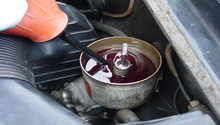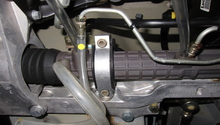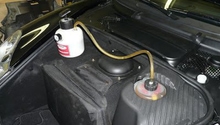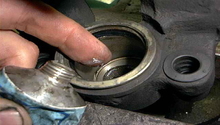Porsche 997: Is My Power Steering Pump Going Bad?
If you suspect your power steering is going out on your Porsche, it would be wise to diagnose the issue and pinpoint the problem first. Follow these steps to get an idea of what the issue might be.
This article applies to the Porsche 997 (911) (2005-2012).
The power steering pump is one of the more costly and difficult parts to replace on your Porsche 997. Likewise, it is not the easiest item to properly diagnose. Issues with the power steering pump can manifest in various ways. You may need a qualified technician to properly diagnose the problems that you are experiencing before attempting any work yourself.
The 997 was manufactured to have a completely sealed power steering fluid, and with that comes a hard line for the fluid which is easily damaged when the pump itself is replaced. There are no bleeder valves to remove the fluid, and while doing this job yourself, although not too difficult, special care still must be taken to not introduce air into the system. For these reasons, you may want to have a professional work on the issue you are experiencing, but read on to get an idea of what may be occurring.

Materials Needed
- Ratchet and sockets of various sizes
- Turkey baster
- Several quarts of new power steering fluid
Step 1 – Check steering wheel play
The steering wheel may be very stiff, especially upon cold start.
- When cold, the control valves can stick until they warm up.
- When the wheel is turned to the right, for example, the control valve will close off on the left side of the rack, and vice versa.
- If either valve is stuck, then the pressure continues to flow on both side of the rack, making the steering wheel very stiff.
- Once the fluid is warmed up and thus, warming up those valves, they may begin working properly again.
- This problem with the valves may also stem from an issue inside the pump itself, not releasing a relief pressure valve to open properly, again, until sufficiently warmed up.
- As the rack is not really a serviceable item, it would likely need to be replaced, which is very costly.
As this is difficult to pin-point a rack or a pump problem, a qualified professional should be consulted.

Step 2 – Power steering fluid may be contaminated
Even though it is a "closed" system, the power steering fluid could have become contaminated or be particularly dirty.
If the power steering fluid is bad, the incorrect pressure may be in play, causing stiff steering conditions. You can remove and replace the fluid using a couple of different methods.
- Remove the pump belt.
- Open the reservoir and use a turkey baster to suck out some of the old fluid, but not too much to suck air into the system.
- Remove the return line at the pump, add fresh fluid into the reservoir and hand turn the pump pulley in the correct direction to introduce the new fluid into the system until the old comes out the return line. You will use a lot of new fluid, and this method will still leave some of the old fluid in the system.
- Another method is to leave the return line connected, remove much of the old fluid from the reservoir; again, make sure to not remove too much and introduce air into the system.
- Remove the belt, add new fluid into the reservoir and turn the pump until it is filled again with old fluid. Repeat the process as many times as it takes until the reservoir is filled with only fresh, new fluid.
- Take the car for a test run and see if the steering issue is corrected.
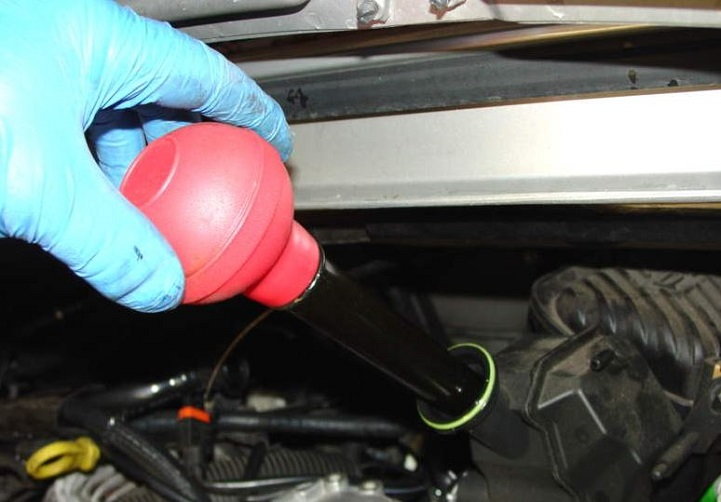
Step 3 – Listen for a bad sounding pump
The pump may be emitting a strange noise similar to the sound of a bad bearing.
- Remove the air box.
- Remove the drive belt.
- Turn each pulley by hand until you hear the noise from the pulley that you are manually turning.
- If the noise is indeed coming from the power steering pump and your fluid level is good, you may be facing a bad pump.
- The power steering pump pulley should have absolutely no play. Even the slightest play can indicate a bad pump.
Although this is probably the most reliable test to indicate a bad power steering pump, having a qualified pro affirm your suspicions is a really good idea as these replacement pumps are very expensive.
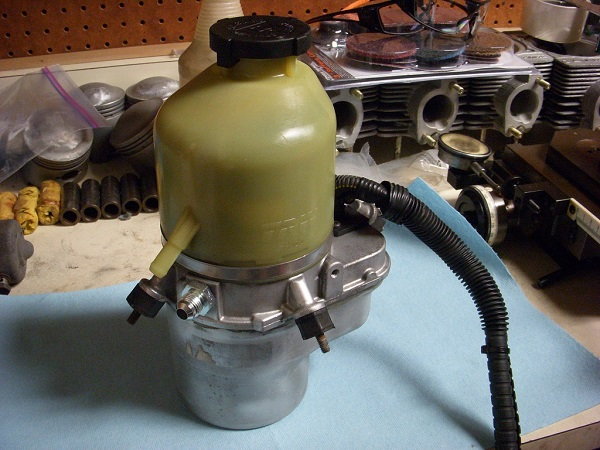
Pro Tip
Detecting play in the pump pulley is often difficult because such a small amount of play can be a good indicator. Just the presence of an odd sound may not be sufficient, and the ultimate problem could be with the steering rack itself. Again, it is advisable to have a professional diagnose the problem for these reasons alone.
Related Discussions
- Power Steering Not Working When Cold - Rennlist.com
- 997.2 Power Steering Pump Failure? - Rennlist.com
- Power Steering Pump Noise? - Rennlist.com


